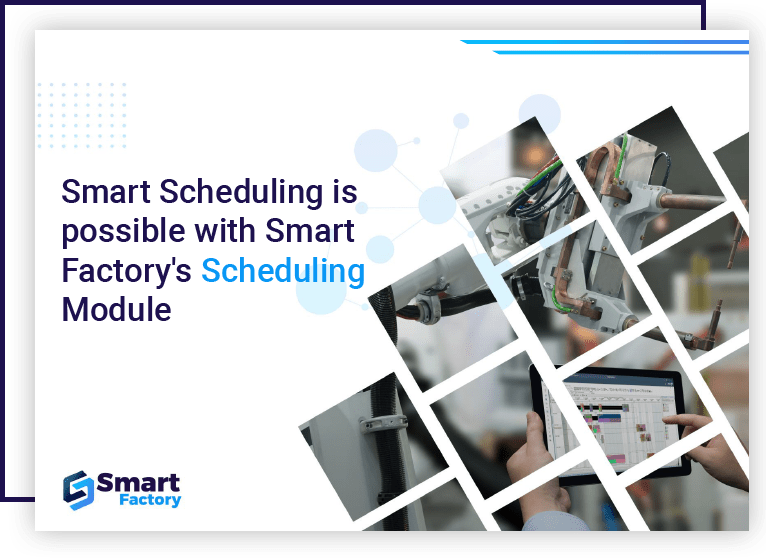In the current global economy, manufacturers must outperform their rivals to prosper rather than just surviving. Businesses are always on the lookout for methods to enhance their productivity and differentiate themselves from the competition, and without advanced planning and scheduling, we sincerely believe this is not possible.
Manufacturers can achieve better synchronization of production processes by using the APS software, which provides greater visibility and control over maximizing utilization and delivering goods on time, while reducing waste and inventory levels.
APS consists of two main components: strategic planning and detailed scheduling. These components assist producers in predicting their requirements for manufacturing resources, coordinating efficient utilization of personnel, materials, and machinery, and providing valuable customer service while increasing profitability. Long-term strategic planning spanning months and years, medium-term tactical planning with a few-weeks planning horizon, and thorough sequencing and scheduling can be accomplished with a sophisticated Advanced Planning and Scheduling solution.
Planning for manufacturing involves strategically aligning your company’s objectives and devising a plan to achieve them. This entails recognizing the value your company provides to its clients. Interestingly, the foundational concept of lean manufacturing revolves around understanding this value proposition.
Let’s consider an example. Suppose you are a car manufacturer known for producing vehicles with the best mileage in their class. Therefore, the initial step in the planning process is to clarify your company’s core concepts and the reasons why your clients choose your products—mileage, in this instance.
The next stage in the planning process involves addressing questions related to product quantities, raw materials, resources, sourcing, and so on. This stage aids in goal-setting by assessing the current status of your company.
Continuing with our example, you might set goals to increase the output of your best-selling car by 10% and to raise overall revenue by 5% by the conclusion of the planning process.
With the planning phase completed, the next step is to create the manufacturing schedule.
A production schedule lists every product to be manufactured, along with its location and manufacturing date. It serves to streamline resource allocation and determine the necessary materials for each manufacturing operation.
Continuing with our example, the scheduling process involves ironing out the specifics. This may include decisions on which facilities will ramp up production or receive upgrades. Additionally, your schedule should specify the location of each car’s production, right down to the specific machines to be used for each task.
While simple techniques may suffice for handling such schedules on a small scale, as your company expands, more powerful tools will become necessary.
Understanding the distinction between advanced planning and scheduling systems is crucial before moving forward.
In summary, scheduling takes care of the details, whereas planning handles the larger picture. Planning lays out the tasks and establishes the direction. The focus of scheduling is on the strategies that must be applied to accomplish the objectives outlined in the plan.
Recognizing the timelines on which scheduling and planning operate is another technique to distinguish between them. The two main types of planning are medium-term tactical planning with a few-weeks’ time horizon and long-term strategies that span months or even years. Nevertheless, scheduling responds to production in real-time and facilitates quick decisions.
To ensure future demand is met, an advanced planning system serves as a strategic decision support tool that integrates forecasts and long-term orders to target stock levels and capacity allocation. Planning periods may span days, weeks, months, or a combination of these timeframes. Planning can be conducted with finite or infinite capacity considerations. If the scheduling system is used in conjunction, the planning system will override the planned volume with the scheduled volume and send back specific production schedule information, allowing for recalculation of the master production schedule (MPS) based on the production schedule.
Advanced scheduling, a finite capacity tool utilizing a comprehensive plant model, generates a feasible timeline by considering various constraints and the actual availability of resources. While also applicable in services and logistics, it primarily serves manufacturers requiring scheduling of equipment, production lines, and resources. Typically, manufacturing orders with attached process routes outlining operational procedures needed for product creation serve as input. After applying scheduling rules, users can interact with the schedule and allocate orders to specific resources.
With the fundamentals covered, let’s now explore the methods used today for scheduling and planning.
When a firm is established, procedures for scheduling and planning naturally evolve. This could involve creating a daily timetable on the spot by the shop floor manager or, more commonly, utilizing an Excel spreadsheet.
To put it bluntly, these methods are ineffective if you aim to grow your company. The inevitable errors that occur when relying on human-based solutions could impede your progress toward achieving objectives. Additionally, the only reliable means to assess the effectiveness of human-based solutions is to monitor for significant indicators.
Material requirements planning (MRP) systems predate Advanced Planning system as they are among the earliest software-based inventory management systems. MRP systems provide inventory requirements for components and raw materials, aiding in the development of a production plan for final goods.
The underlying premise of MRP systems is limitless production capacity. However, this assumption is also the greatest weakness of MRP systems in planning; they are unable to cope up with limitations and shifting priorities.
These are precisely the scenarios for which advanced planning and scheduling systems were designed. APS systems employ a variety of sophisticated mathematical concepts, including heuristics and constraint-based programming, in addition to linear programming and other techniques for managing conflicting priorities.
Countless organizers and schedulers spend long hours each day on their spreadsheets, only to produce schedules that, by the time they are released, are already outdated due to modifications made along the way.
Delayed purchase orders, labor shortages, and machine malfunctions are all part of how the real world operates, and we understand how frustrating it can be! When making changes to your schedule, it is crucial to minimize the amount of manual labor involved. However, with an efficient APS solution, you can quickly and efficiently manage changes, while also providing precise impact assessments.
Creating a production schedule involves more than simply deciding what needs to be done and putting to work. Numerous factors influence the schedule timetable. The finite capacity of your resources, including labor, equipment, tools, and materials, must be considered to accurately reflect the realities of your shop floor and develop an appropriate schedule.
APS software provides you the ability to simulate various “what-if” scenarios to devise solutions aimed at reducing expenses, lead times, inefficiencies, and inventories. The APS solutions are designed to seamlessly integrate with your current systems (ERP, MRP, MES, etc.), allowing them to mirror these realities and remain up-to-date.
Through the implementation of advanced planning and scheduling, production processes can be better synchronized, leading to increased visibility and on-time delivery while reducing waste and inventory levels. Thanks to its sophisticated mathematics, producers can swiftly analyze and compute realistic production schedules that consider various limitations and business regulations. Planners can achieve optimal outcomes by creating and analyzing what-if scenarios.
APS software has the potential to revolutionize the industry. By identifying specific needs, such as variable demand, intricate supply chains, high overhead costs, inventory management challenges, complex production processes, recurring scheduling conflicts, and a lack of data-driven insights, proactive steps can be taken to optimize manufacturing operations.
By implementing APS software, you can reduce expenses, increase customer satisfaction, streamline operations, and maintain a competitive edge. We can certainly assist you in understanding your options and determining the best course of action for resolving your current challenges. Please explore our website and reach out to us so we can discuss your objectives.















